Red-breasted Flycatcher Ficedula parva
Very scarce coastal passage migrant mainly August-October.
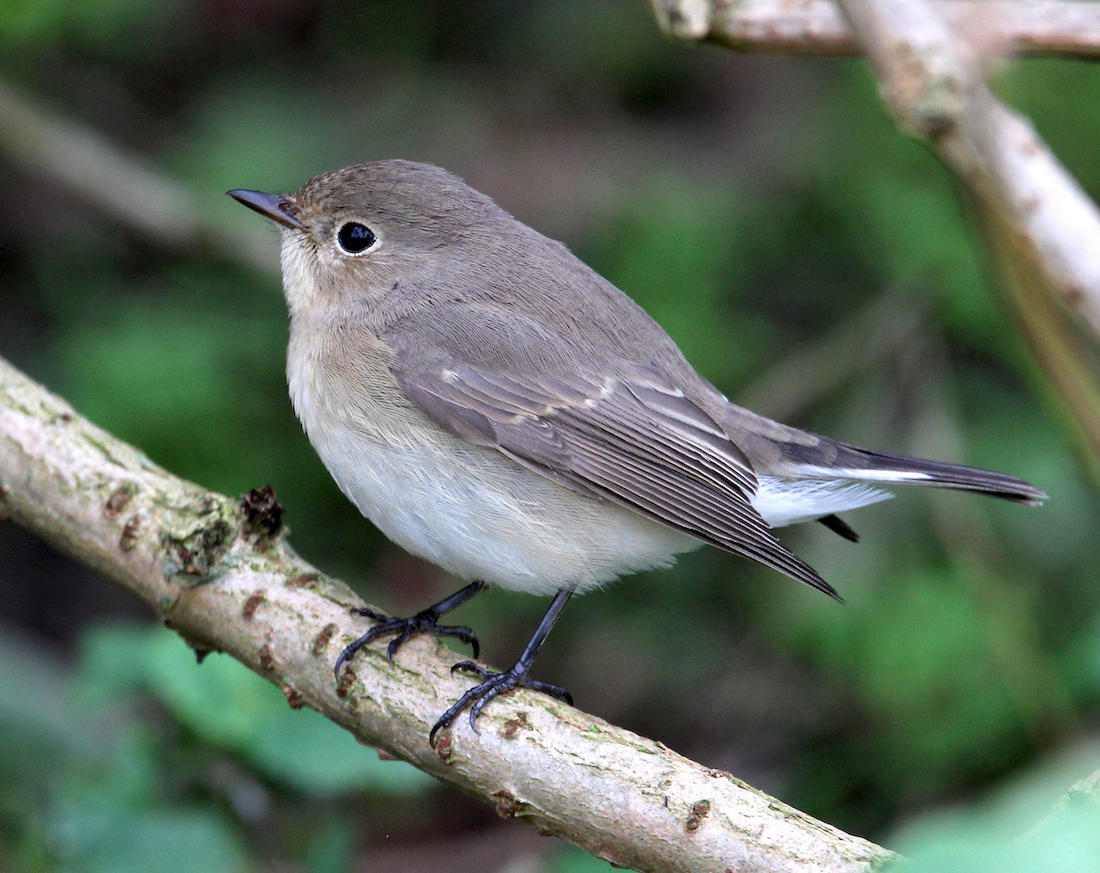
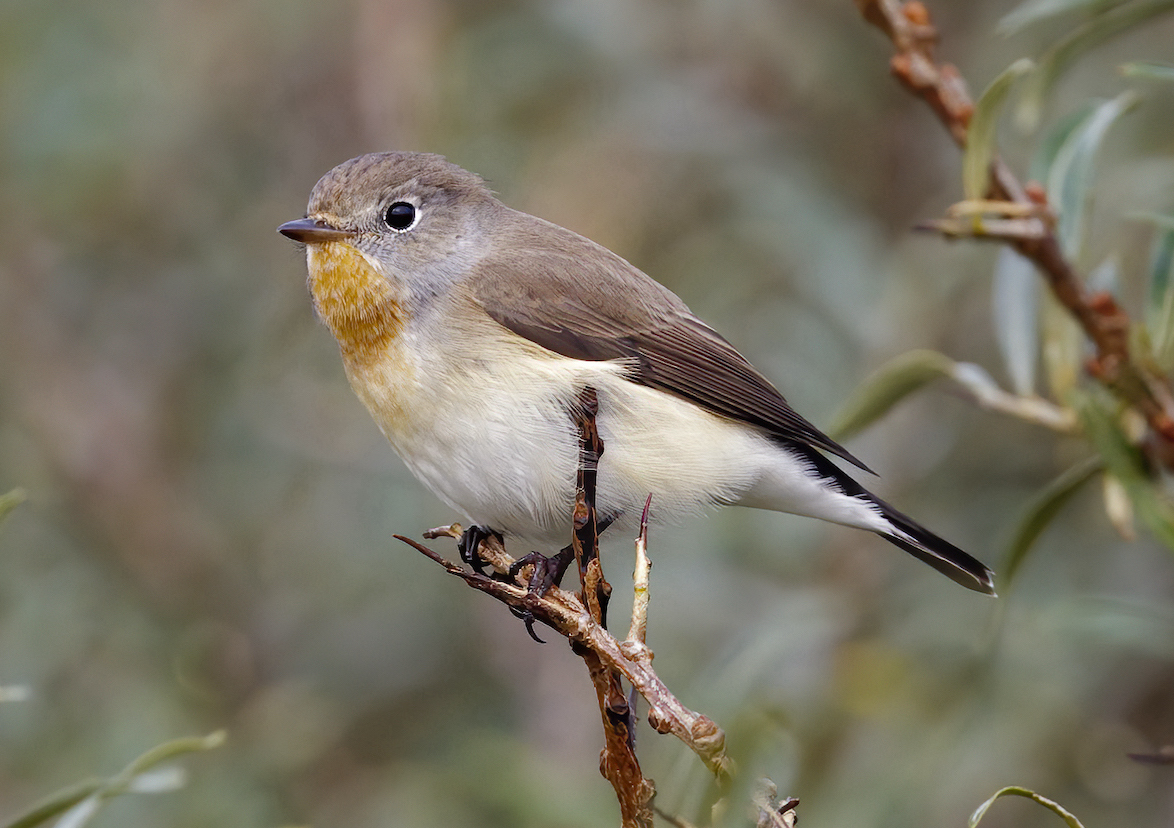
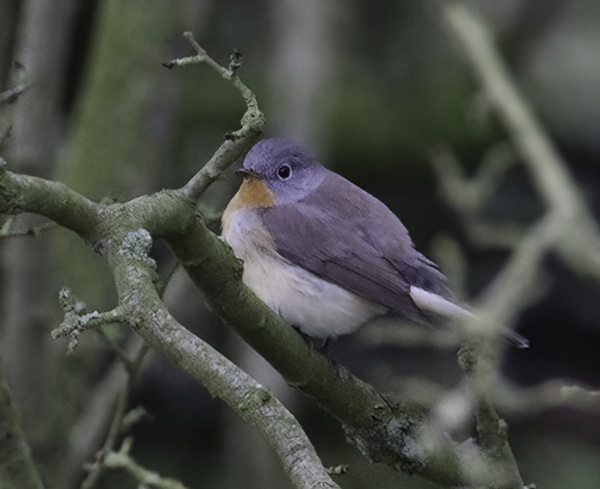
Red-breasted Flycatcher: left, Donna Nook 28th September 2010 (John Clarkson); centre, adult male Donna Nook October 9th 2010 and right, Theddlethorpe October 14th 2013 (Graham Catley).
The first Red-breasted Flycatcher in Lincolnshire was a 1CY male shot by Caton Haigh at North Cotes on Sep 16th, 1909:
"On September 16th I shot an immature male of the Red-breasted Flycatcher (Muscicapa parva) from a hedge near the coast at North Cotes. There were not many birds passing at this time, but the hedges contained Redstarts, Pied Flycatchers, and Garden-Warblers, and there were many Wheatears along the sea-beach. This is, I believe, the first occurrence of this species in Lincolnshire".
Another was 'obtained' there by Caton Haigh in October 1922 and two more in September 1929. In September 1949, two were trapped at Gibraltar Point and another seen at Humberston Fitties. From 1950 onwards, the species has been a regular migrant, mainly in autumn, though remaining very scarce. The total number of individuals recorded up to 2021 is around 167, and the annual average for the ten years 2012-2021 is between two and three birds. However, totals vary considerably between years and after bumper years in 2013 and 2014 (eight in each year), the period 2015-2021 saw just six birds recorded and with blanks in 2017 and 2020.
Autumn accounts for the vast majority of records and the finding dates of these span August 23rd to November 5th, this last one remaining to November 7th. There have been just five spring records occurring between May 19th and May 28th . All have been found on the coast, with the well-watched areas of Donna Nook, Saltfleetby-Theddlethorpe and Gibraltar Point accounting for most. The three exceptions were one at Spalding on October 1st 1961, one at Holbeach Marsh on September 27th 1992 and one at Freiston Shore on September 26th 2008.
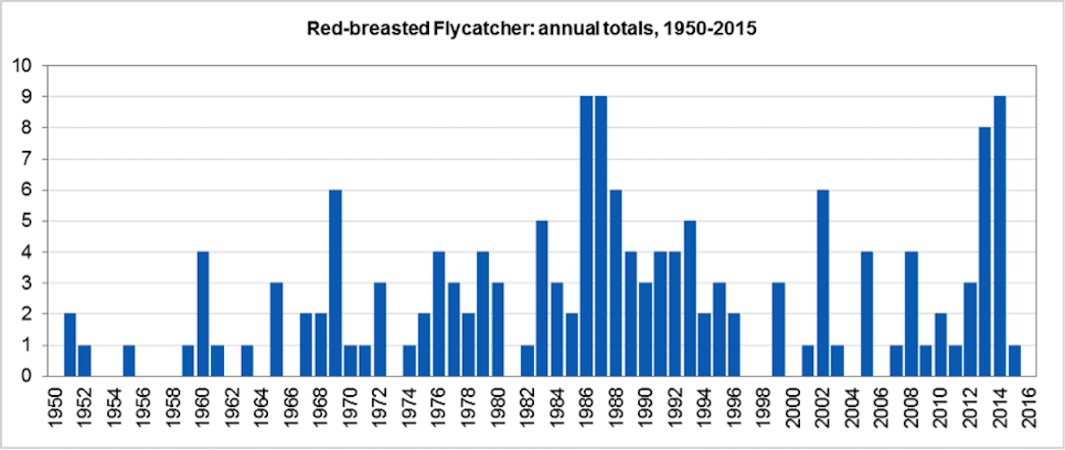
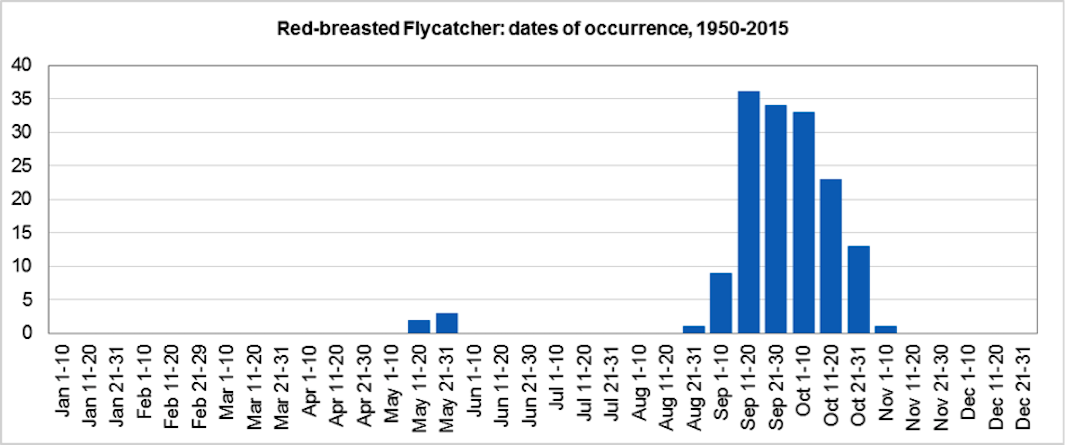
Reference
Caton Haigh, G. H. (1909). Red-breasted Flycatcher in Lincolnshire. British Birds 3: 226.
(Account prepared October 2017; updated with reference to the new Birds of Lincolnshire (2021) December 2022)

